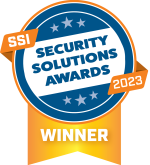In today’s complex and dynamic security landscape, businesses require comprehensive protection to safeguard their assets, people, and information. This entails the integration of various security systems to create a unified and cohesive approach. Security system integration involves connecting and coordinating different components, such as video surveillance, access control, intrusion detection, and alarm systems, into a single, centralized platform.
By integrating security systems, businesses can achieve a more robust and effective security infrastructure. How? This blog post will cover why security system integration is essential for comprehensive protection.
Understanding Security System Integration
Security system integration refers to the process of connecting and coordinating different security systems and devices to work together seamlessly as a unified solution. It involves the integration of various components, such as video surveillance, access control, intrusion detection, and other security technologies, into a centralized management platform.
By integrating these diverse systems, businesses can achieve a comprehensive and cohesive security infrastructure that offers numerous advantages. Here are examples of security systems that can be integrated:
- Video Surveillance
- Access Control
- Intrusion Detection
- Building Management Systems
The Role of Security System Integration in Comprehensive Protection
Security system integration plays a vital role in achieving comprehensive protection by connecting and coordinating various security components into a unified and cohesive solution. Here’s a detailed discussion on how integration contributes to comprehensive protection and real-world scenarios that illustrate its importance:
Enhanced Situational Awareness: Integration enables the seamless sharing and correlation of data between different security systems. This holistic view enhances situational awareness, allowing security personnel to monitor and respond to incidents effectively. For example, integrating video surveillance with access control and intrusion detection systems enables real-time video verification of access events and alerts, providing a more accurate understanding of the situation.
Improved Incident Response: Integration enables faster and more coordinated incident response. When a security event occurs, integrated systems can trigger automatic actions, such as initiating alarm notifications, locking or unlocking doors, or directing video surveillance to specific areas. For instance, if an access control system detects an unauthorized entry, it can immediately alert security personnel, trigger video recording, and activate alarm systems to mitigate the threat.
Proactive Threat Detection: Integration enables proactive threat detection by combining the capabilities of different security systems. For example, integrating video analytics with access control systems can detect unusual behavior or loitering in restricted areas, triggering real-time alerts for immediate response. Such integration allows security teams to identify potential threats before they escalate into critical incidents.
Streamlined Operations: Integration streamlines security operations by eliminating information silos and reducing manual processes. Centralized management platforms enable a unified interface to monitor and manage multiple systems, simplifying administration and reducing operational complexity.
Real-world scenarios further highlight the importance of security system integration:
- Unauthorized Access: An integrated system can detect an unauthorized access attempt through access control and trigger video surveillance to capture the event. This integrated approach allows security personnel to identify the individual, verify the incident, and take appropriate action promptly.
- Emergency Situations: Integration between access control, and video surveillance can facilitate quick evacuation by automatically unlocking doors and providing real-time video feeds to guide occupants to safety.
- Asset Protection: Integration of surveillance cameras, access control, and intrusion detection systems can provide comprehensive protection for high-value assets. When an alarm is triggered, integrated systems can activate alarm notifications, record video footage, and restrict access to secure areas, minimizing the risk of theft or damage.
Benefits of Security System Integration
Integrating security systems offers numerous benefits that contribute to improved overall security, streamlined operations, and more efficient management. Here’s a deep dive into the key advantages of integrating security systems:
- Improved Response Times
- Streamlined Operations
- Unified Management
- Enhanced Analytics and Reporting
- Scalability and Future-Proofing
- Cost and Resource Efficiency
Challenges in Implementing Security System Integration and How to Overcome Them
System Compatibility: Integrating security systems from different manufacturers or with varying protocols may present compatibility issues. To overcome this, conduct thorough research and choose systems that are compatible or have proven integration capabilities. Engage with vendors and seek their expertise to ensure seamless interoperability between systems.
Data Standardization: Integrating data from multiple sources can be challenging due to differences in data formats, naming conventions, and structures. Establishing data standardization protocols and mapping mechanisms will enable consistent data exchange. Develop data dictionaries and implement data normalization practices to ensure compatibility and consistency across integrated systems.
Scalability and Future Expansion: As organizations grow and security needs evolve, scalability becomes crucial. Select an integration platform that can accommodate future expansions and easily integrate new security technologies or devices. Consider scalability options such as cloud-based platforms or modular architectures that allow for seamless integration of additional systems as requirements change.
Organizational Alignment and Collaboration: Successful integration requires collaboration among different stakeholders, including security, IT, facilities, and management teams. Establish clear lines of communication, define roles and responsibilities, and promote cross-functional collaboration.
Proper Planning and Testing: Thorough planning and testing are essential for successful integration. Create a detailed integration roadmap, identify dependencies, and establish clear milestones.
Training and Education: Ensure that relevant personnel receive adequate training and education on the integrated system. Familiarize users with the new interface, functionality, and processes. Provide ongoing training to ensure that staff can maximize the benefits of the integrated solution and effectively utilize its features for improved security operations.
Factors to Consider When Integrating Security Systems
Integrating security systems is a complex undertaking that requires careful consideration to ensure a successful integration process. Here are key factors to consider when planning to integrate security systems:
Security Objectives: Clearly define your security objectives and the specific outcomes you wish to achieve through integration. Identify the primary reasons for integration, such as improved situational awareness, streamlined operations, or enhanced response capabilities. Understanding your security goals will guide the selection of systems and the design of the integration architecture.
System Compatibility: Assess the compatibility of the security systems you intend to integrate. Verify if the systems support open standards and have interoperability capabilities. Consult with vendors or system integrators to ensure that the systems you choose can seamlessly integrate and exchange data without compatibility issues.
Scalability and Flexibility: Consider the scalability and flexibility of the integrated solution. Determine whether the chosen integration platform can accommodate future growth and the addition of new security technologies or devices. Ensure that the integration architecture is flexible enough to adapt to evolving security needs and technological advancements.
Data Integration and Standardization: Evaluate how data from different security systems will be integrated and harmonized. Define data integration protocols, including data formats, naming conventions, and data exchange mechanisms. Standardize data across systems to ensure consistency and compatibility. This includes mapping common data elements and establishing data normalization practices.
User Interface and Experience: Consider the user interface and experience of the integrated system. Ensure that the interface is intuitive and user-friendly, allowing security personnel to efficiently navigate and interact with the integrated solution. Conduct user testing and gather feedback to refine the interface and address any usability concerns.
Conclusion
To fully leverage the benefits of security system integration, businesses are encouraged to explore suitable solutions that align with their specific industry and security needs. NAVCO offers security services tailored to various verticals, including banks and financial services, commercial businesses, convenience stores, grocery stores, property management, restaurants, retail, and department stores. Our expertise in these industries allows us to provide customized security solutions that address specific challenges and requirements.
To learn more about how NAVCO can assist your business and discuss suitable security solutions, contact us at (714) 779-7499. Take proactive steps to safeguard your business and ensure comprehensive protection by exploring the possibilities of security system integration today.

